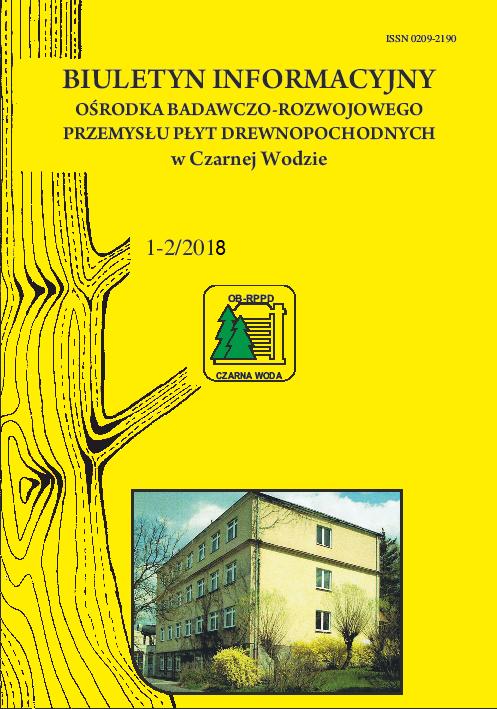
-
Bulletin
Research & Develpoment Centrefor Wood-Based Panels in Czarna Woda
Quality Issues In upholstery furniture constructions.Improvement by using different material
Ewa Skorupińska, Krzysztof Wiaderek, Maciej Sydor
- Abstract
- Article full text in Polish
The research problem described in the article concerned the insufficient strength of the pine beam of the sofa seat, which was heavily loaded with dynamic forces. The research aimed to compare the strength of an alternative furniture material with the material used so far. The test samples were made of an alternative material (LVL) and the currently used material (pine wood). The moisture content of both tested materials was in the range of 8.3-11.4%. The tests measured the bending strength of both construction materials and the withdrawal capacity of plastic spring holders fastened with staples. The three-point bending flexural test used two series of eight test samples (n = 8) with dimensions of 1970×65×36 mm. The test was carried out by simulating a furniture element's real dynamic bending load using a special testing machine. The spring holders' resistance to withdrawal strength was tested using a universal testing machine. In each tested material, the spring holders were fastened in two ways, and the tests were carried out in a series of 5 pieces (n = 5). The bending test results indicate that LVL was more resistant to bending than pine wood. The median of the forces in the series for LVL was 360 N, and in the case of pine wood - 315 N. An important parameter tested was the withdrawal test of spring holders in both tested materials. The results of this test point out that spring holders fastened in pine wood have a different load capacity (500-800 N). This load capacity was related to the direction of the wood fibers. The load capacity in the LVL changed to a smaller range (700-800 N). Analyzing the test results points out that the higher the moisture content of the tested samples, the lower the bending resistance. Based on the conclusions of the research, it was decided to change the rear seat rail from pine wood to LVL.
Impact of conditions of use on selected properties of HDF
Piotr Borysiuk, Bartosz Jastrzębski, Radosław Auriga
- Abstract
- Article full text in Polish
As part of the work, the influence of air temperature and relative humidity on selected properties of HDF boards was examined. Industrial HDF boards with a thickness of 2.5 mm and a density of 820 kg/m3 were used for the tests, which were subjected to seven-day air conditioning at temperatures from -20°C to 50°C (in steps of 10°C) at 55% relative humidity and at 40°C at 20% and 80% relative humidity. For the tested boards, the following were determined: density and density profile, MOR and MOE, IB, thickness swelling and water absorption after 24 hours of soaking in water. It has been shown that the increase in air- conditioning temperature has an ambiguous effect on the MOR and MOE values of the tested HDF boards. In the temperature range from -20°C to 10°C, the strength values generally decreased, while further increasing the air conditioning temperature (above 10°C) increased the MOR and MOE values. On the other hand, in correlation to IB, an increase in air-conditioning temperature generally increases the strength of HDF boards. An increase in relative air humidity from 55% to 80% causes a decrease in the MOR and MOE values, while an increase in relative air humidity from 20% to 55% causes an increase in the IB value of conditioned HDF boards. In the case of physical properties, it was shown that an increase in the air-conditioning temperature translates into an increase in the thickness swelling value and water absorption of HDF boards. On the other hand, an increase in relative air humidity causes a decrease in the value of swelling and water absorption of HDF boards.




